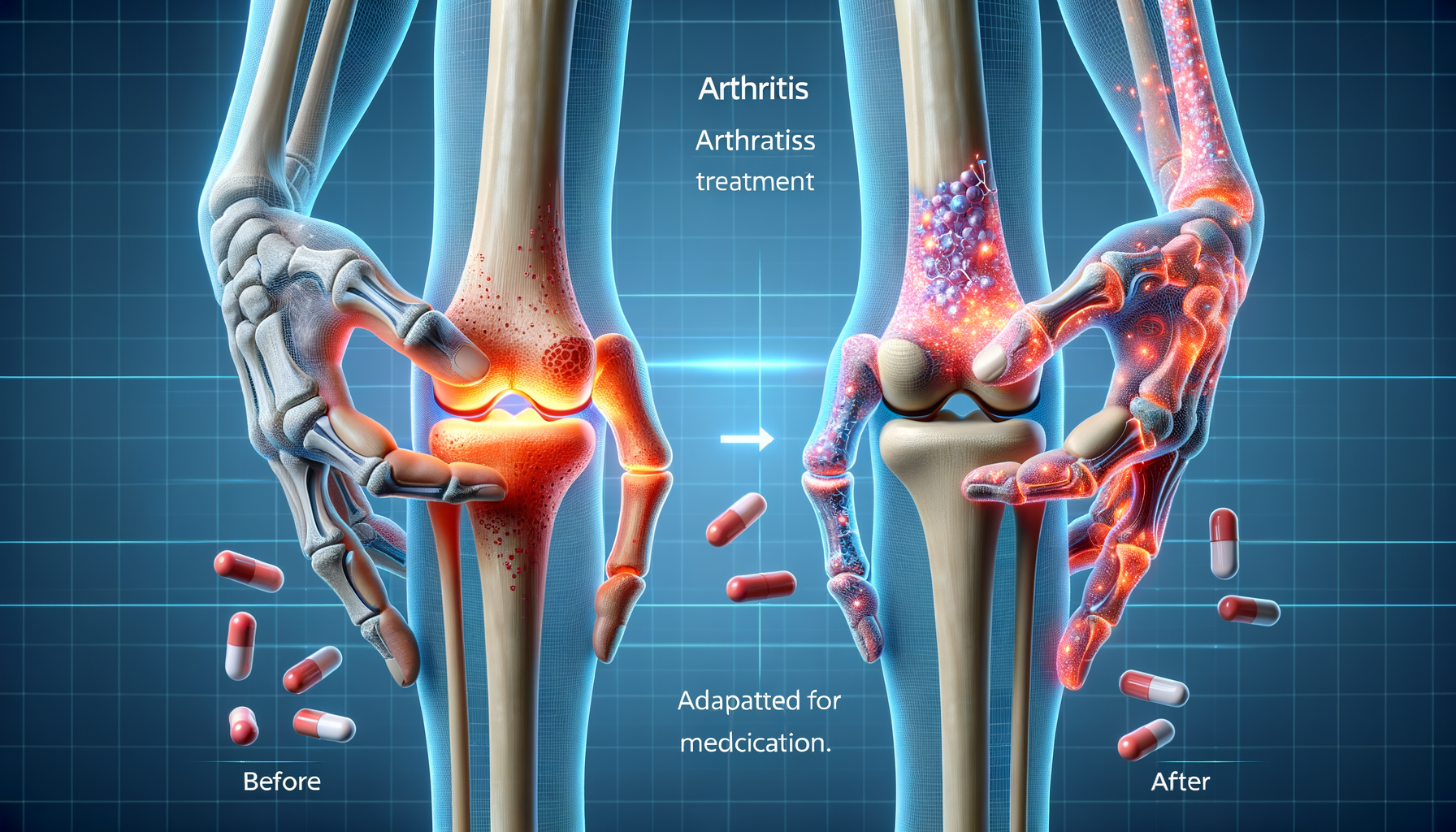Understanding Arthritis: A Brief Overview
Arthritis is a common condition that affects millions of people worldwide. It is characterized by inflammation of the joints, leading to pain, stiffness, and decreased mobility. There are over 100 types of arthritis, with osteoarthritis and rheumatoid arthritis being the most prevalent. Osteoarthritis results from wear and tear of the joint cartilage, while rheumatoid arthritis is an autoimmune disorder where the body’s immune system attacks its own tissues.
Understanding the type of arthritis is crucial for effective treatment. For instance, osteoarthritis is often managed through lifestyle changes and pain management, while rheumatoid arthritis may require more aggressive treatment to control the immune response. The prevalence of arthritis increases with age, but it can affect individuals of all ages, including children. Early diagnosis and intervention are key to managing symptoms and preventing further joint damage.
Arthritis can significantly impact daily life, making simple tasks challenging. It can lead to a decreased quality of life, affecting both physical and mental health. The need for effective treatment options is paramount, as they can help alleviate symptoms, improve joint function, and enhance overall well-being.
Conventional Treatments for Arthritis
Conventional treatments for arthritis are primarily focused on managing symptoms and improving joint function. These treatments often include medications, physical therapy, and lifestyle modifications. Medications such as nonsteroidal anti-inflammatory drugs (NSAIDs) are commonly prescribed to reduce inflammation and relieve pain. Disease-modifying antirheumatic drugs (DMARDs) are used for rheumatoid arthritis to slow disease progression and prevent joint damage.
Physical therapy plays a vital role in arthritis management by helping to maintain joint flexibility and strength. Therapists design personalized exercise programs that can improve mobility and reduce pain. In some cases, assistive devices such as braces or orthotics may be recommended to support affected joints and reduce strain.
Lifestyle changes are also crucial in managing arthritis. Maintaining a healthy weight can significantly reduce stress on the joints, particularly the knees and hips. A balanced diet rich in anti-inflammatory foods can also contribute to symptom relief. Smoking cessation and stress management techniques, such as mindfulness or yoga, are additional strategies that can support overall treatment efforts.
Exploring Alternative and Complementary Therapies
In recent years, there has been a growing interest in alternative and complementary therapies for arthritis. These approaches are often used alongside conventional treatments to enhance their effectiveness. Some of the popular alternative therapies include acupuncture, massage therapy, and herbal supplements.
Acupuncture involves the insertion of thin needles into specific points on the body to relieve pain and improve energy flow. Studies have shown that acupuncture can be beneficial for reducing arthritis pain and improving joint function. Massage therapy is another alternative treatment that can help reduce muscle tension, improve circulation, and enhance relaxation.
Herbal supplements such as turmeric and ginger are known for their anti-inflammatory properties and are often used to manage arthritis symptoms. However, it is essential to consult with a healthcare provider before starting any supplements, as they can interact with medications and have side effects.
While alternative therapies can provide relief, they should not replace conventional treatments. Instead, they can be integrated into a comprehensive treatment plan tailored to the individual’s needs and preferences.
Innovative Treatments and Future Directions
The field of arthritis treatment is continually evolving, with new and innovative therapies being developed. One promising area of research is the use of biologic drugs, which are designed to target specific components of the immune system involved in inflammation. These drugs have shown significant promise in treating rheumatoid arthritis and other inflammatory forms of the disease.
Another exciting development is the use of regenerative medicine techniques, such as stem cell therapy, to repair damaged joint tissues. Although still in the experimental stages, these therapies have the potential to revolutionize arthritis treatment by promoting healing and regeneration of joint structures.
Researchers are also exploring the role of genetics in arthritis, aiming to develop personalized treatment plans based on an individual’s genetic makeup. This approach could lead to more effective and targeted therapies, reducing the trial-and-error process often associated with finding the right treatment.
As research continues, the future of arthritis treatment looks promising, with the potential for more effective and less invasive options on the horizon.
Living Well with Arthritis: Tips and Strategies
Living with arthritis can be challenging, but with the right strategies and support, individuals can lead fulfilling lives. One of the most important aspects of managing arthritis is staying active. Regular exercise helps maintain joint flexibility, strengthen muscles, and improve overall health. Low-impact activities such as swimming, cycling, and walking are excellent choices for individuals with arthritis.
Diet also plays a crucial role in managing arthritis symptoms. Consuming a diet rich in fruits, vegetables, whole grains, and lean proteins can help reduce inflammation and support overall health. Omega-3 fatty acids, found in fish like salmon and mackerel, have anti-inflammatory properties and can be beneficial for individuals with arthritis.
Support from family, friends, and healthcare professionals is vital for individuals with arthritis. Joining support groups or seeking counseling can provide emotional support and practical advice for managing the condition. It’s also essential to communicate openly with healthcare providers about symptoms and treatment goals to ensure optimal care.
By adopting a proactive approach to managing arthritis, individuals can improve their quality of life and continue to engage in activities they enjoy.




Leave a Reply